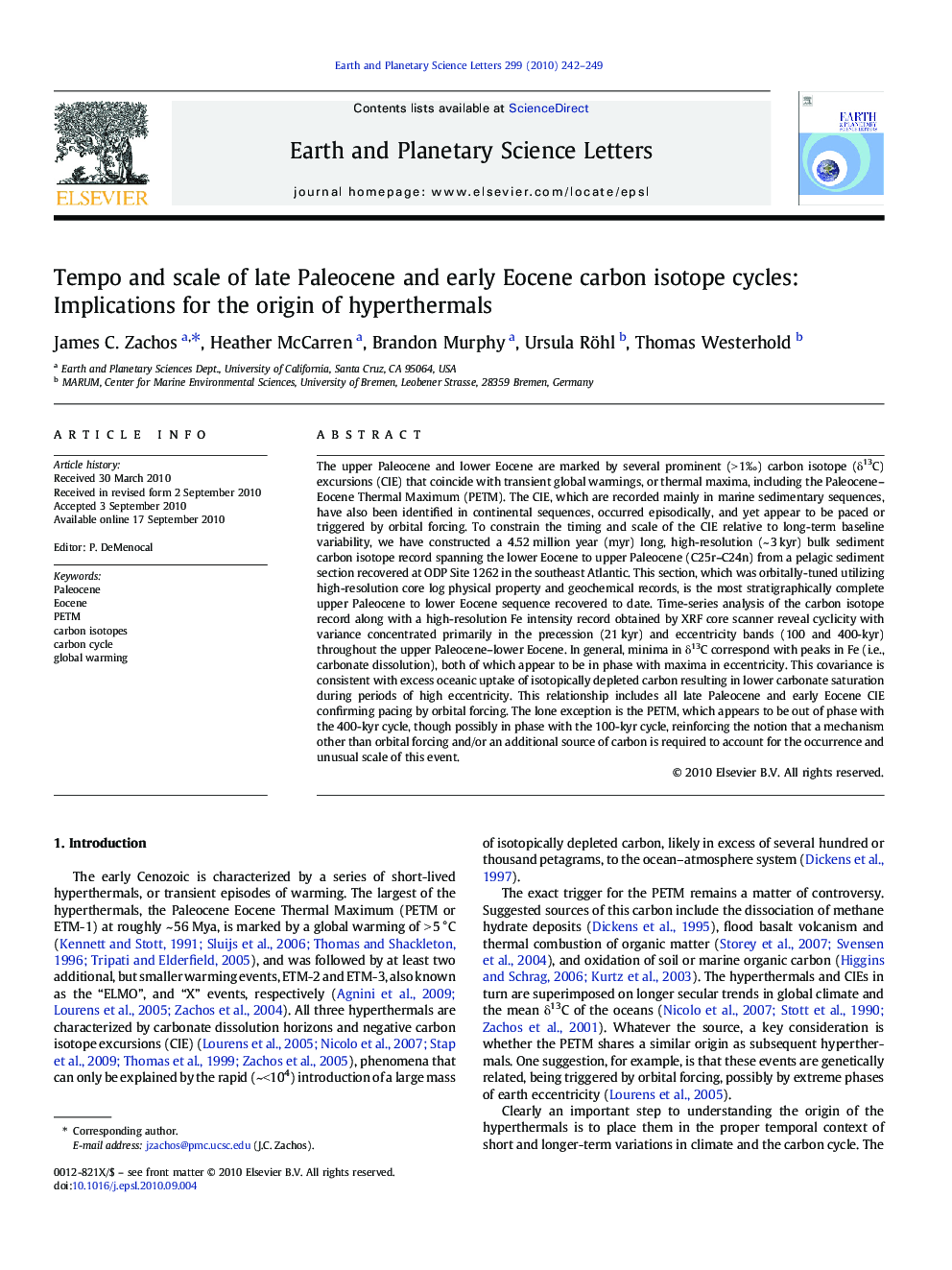| کد مقاله | کد نشریه | سال انتشار | مقاله انگلیسی | نسخه تمام متن |
|---|---|---|---|---|
| 4678292 | 1634842 | 2010 | 8 صفحه PDF | دانلود رایگان |

The upper Paleocene and lower Eocene are marked by several prominent (> 1‰) carbon isotope (δ13C) excursions (CIE) that coincide with transient global warmings, or thermal maxima, including the Paleocene–Eocene Thermal Maximum (PETM). The CIE, which are recorded mainly in marine sedimentary sequences, have also been identified in continental sequences, occurred episodically, and yet appear to be paced or triggered by orbital forcing. To constrain the timing and scale of the CIE relative to long-term baseline variability, we have constructed a 4.52 million year (myr) long, high-resolution (~ 3 kyr) bulk sediment carbon isotope record spanning the lower Eocene to upper Paleocene (C25r–C24n) from a pelagic sediment section recovered at ODP Site 1262 in the southeast Atlantic. This section, which was orbitally-tuned utilizing high-resolution core log physical property and geochemical records, is the most stratigraphically complete upper Paleocene to lower Eocene sequence recovered to date. Time-series analysis of the carbon isotope record along with a high-resolution Fe intensity record obtained by XRF core scanner reveal cyclicity with variance concentrated primarily in the precession (21 kyr) and eccentricity bands (100 and 400-kyr) throughout the upper Paleocene–lower Eocene. In general, minima in δ13C correspond with peaks in Fe (i.e., carbonate dissolution), both of which appear to be in phase with maxima in eccentricity. This covariance is consistent with excess oceanic uptake of isotopically depleted carbon resulting in lower carbonate saturation during periods of high eccentricity. This relationship includes all late Paleocene and early Eocene CIE confirming pacing by orbital forcing. The lone exception is the PETM, which appears to be out of phase with the 400-kyr cycle, though possibly in phase with the 100-kyr cycle, reinforcing the notion that a mechanism other than orbital forcing and/or an additional source of carbon is required to account for the occurrence and unusual scale of this event.
Journal: Earth and Planetary Science Letters - Volume 299, Issues 1–2, 15 October 2010, Pages 242–249